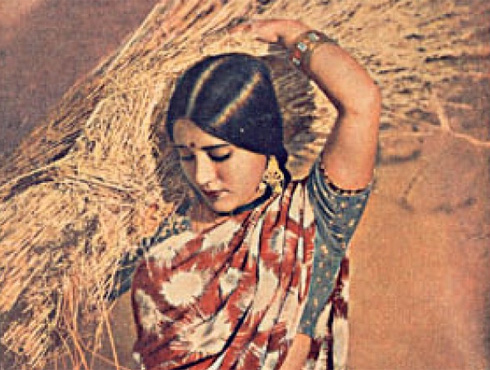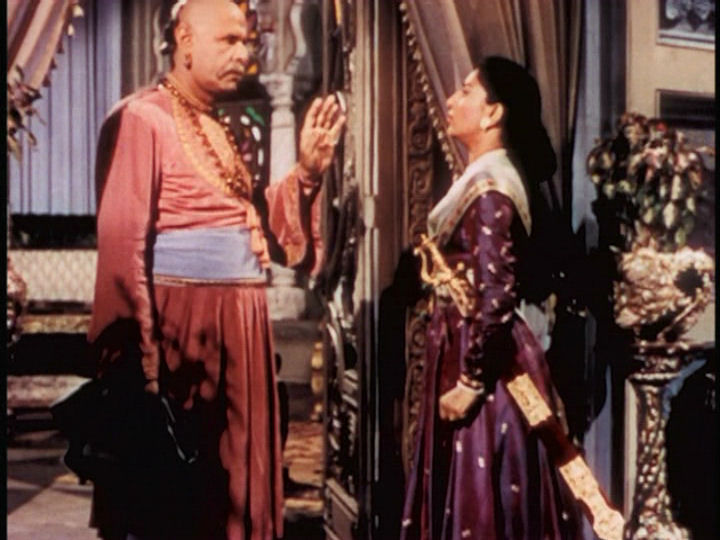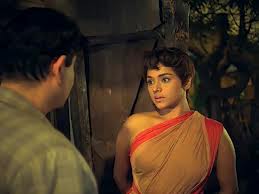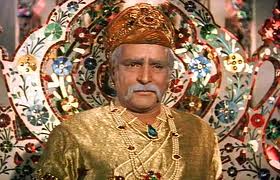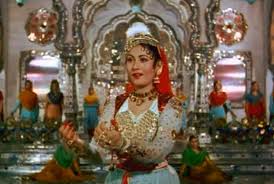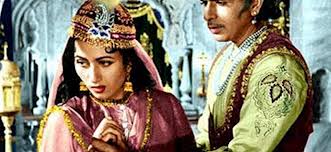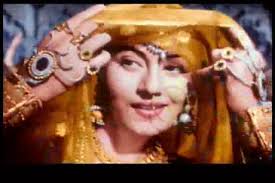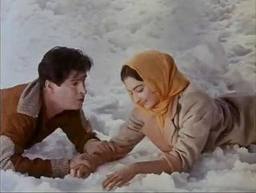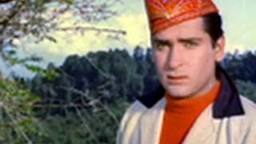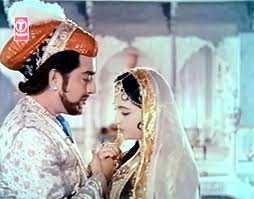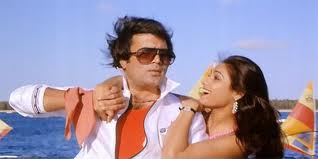Colour films in Hindi-Urdu
(→Colour films gradually edge out black and white) |
(→Manipuri) |
||
| Line 82: | Line 82: | ||
Sanakeithel was made in 1983, according to Imdb. Its Director was M.A. Singh. Imdb confirms that it was in colour. Therefore, Sanakeithel was Manipur’s first colour film. | Sanakeithel was made in 1983, according to Imdb. Its Director was M.A. Singh. Imdb confirms that it was in colour. Therefore, Sanakeithel was Manipur’s first colour film. | ||
| + | |||
| + | (No photograph available. Can any reader help?) | ||
| + | |||
==Marathi== | ==Marathi== | ||
Sairandhri (1933), processed and printed in Germany; would have been the first colour film in Marathi, and also India's first colour film. However, its processing was not successful. | Sairandhri (1933), processed and printed in Germany; would have been the first colour film in Marathi, and also India's first colour film. However, its processing was not successful. | ||
Revision as of 20:41, 8 June 2013
Contents |
India
India
Hindi-Urdu
Kisan Kanya, India’s first colour film
Attempts to shoot the first Indian colour film failed when the negative for Sairhandri, directed by Rajaram Vankudre Shantaram, was ruined during processing abroad. Prabhat Film Company's “Sairandhri” was the first talkie film produced in Multicolour in 1933. However, its colour quality was not satisfactory.
Kisan Kanya (lit: the peasant girl; 1937/ Dir: Moti B. Gidvani; prod. Ardeshir Irani) was arguably India’s first colour film. This story about rural poverty did not go down well with mass audiences, so colour films did not catch the public imagination—till Aan (1953).
One source(asia.isp)says that Bhavnani Productions ‘Rangeen Zamana” produced and directed by M. Bhavnani in 1948 (released as “Ajit” in 1949) was the first colour feature film produced in Kodachrome and blown up to 35mm.
Technicolor
Technicolor in India
Aan, a Dilip Kumar- Nimmi starrer by Mehboob Khan, was the first Indian film in Technicolor, the most expensive colour format of that era, or ever. It was shot in 16 mm and later blown up to 35 mm. It was a landmark success.
V. Shantaram’s Jhanak Jhanak Payal Baaje (1955), Mehboob Khan’s Mother India (1957) and V. Shantaram’s Navrang (1959), too, were the biggest hits of their respective years. Only Sohrab Modi’s lavishly produced Technicolor Jhansi Ki Rani (1956) fared badly at the box office.
Technicolor’s run of success continued into the 1960s, but not as triumphantly. Gunga Jamuna, Mere Mehboob and Sangam were, again, the biggest hits of their respective years. But Son of India, Leader, Palki and Mera Naam Joker tanked.
So, Technicolor was no longer a guarantor of success. Besides, Technicolor’s parent company, Eastman Kodak, had launched Eastmancolor.
The Technicolor process
Technicolor was expensive because the image being photographed (i.e. the light coming from this image) had to pass through three strips of black-and-white film. Together these three strips formed a rich colour image. This colour went by the brand name Technicolor in the case of moving pictures and Kodachrome when used for still photography.
The camera’s lens split the light coming from the actors and the background into two beams, one of which went through a green filter and the other through a magenta filter. The green filter obstructed red and blue light. The second strip received this image. The magenta filter kept green light out. The third strip recorded the residual colours. The topmost strip could receive only blue light and recorded blue images. The cyan, magenta and yellow dye images from these three negatives were superimposed on a single strip of film, which resulted in sharp, vivid Technicolor images.
The historical benefit of this complicated and expensive technology is that old Technicolor prints (notably, Aan itself) retain their original colours, while pictures shot on cheaper colour films have faded or lost one shade or even one colour or another. The original colours of Mughal e Azam’s two Technicolor sequences remain vastly crisper, more detailed and lustrous than the bulk of the film, which was colourised from the black and white original in 2004.
Eastmancolor
Junglee (1961) was the first Indian film in Eastmancolor, a colour technology made by the same company as Technicolor, but less complex and, therefore, less expensive. On the other hand Eastmancolor was vastly more satisfying than the even cheaper Gevacolor and Orwocolor. (Fujicolor was the choppy and downmarket colour negative of the 1970s and early '80s. It was Souten [1983] that introduced India to the lavish, new Fujicolor, though Yeh Nazdeekiyan (1982), the year before, too, had indicated that Fujicolor had changed.)
Eastmancolor films after Junglee included Professor and Taj Mahal (both 1963). By the mid-1960s Hindi-Urdu audiences started demanding colour. Dosti, a low budget weepie that touched the nation’s hearts (1964) and Saheli (1965) were, arguably, the last hits in black and white. Haqeeqat and Shaheed (1965) had huge cult followings, especially among nationalistic urban youths but neither was a major mainstream commercial film.
'Songs and dances in colour'/ 'Tamaam rangeen'
In the 1950s and 1960s many black and white films--including respected films by Satyajit Ray. K. Asif and Mrinal Sen of India, and A Tarkovsky of the USSR--had a few reels in colour. If such a film was Indian and of the commercial kind its posters would read 'Songs and dances in colour.'
If an Indian film were 'entirely in colour' its local-level posters would, till even the late 1970s, mention this; in North India the reassurance would read 'Tamaam rangeen' (entirely in colour).
Colour films gradually edge out black and white
The megastar of the 1950s and the early ’60s, Dilip Kumar, did not act in a black and white film after 1961; the highest paid star of the mid-1960s, Rajendra Kumar, followed suit. By the late 1960s the only black and white films featuring major actors were serious films meant for arthouses (e.g. the Raj Kapoor starrer Teesri Qasam/ 1967 and the Nargis-starrer Raat Aur Din/ 1967) or those that had got delayed in the making.
Shammi Kapoor is the star associated with the introduction of Eastmancolor in India but even he had an A-category commercial black and white film Budtameez as late as in 1966. The Dev Anand starrer Kahin Aur Chal (1968) was perhaps the last A-list commercial Hindi-Urdu film in black and white.
Black and white continued into the early 1970s, with art films like Dastak (1970) and Ashad Ka Ek Din (1971).
Art films have been in colour since at least Satyajit Ray’s Kanchanjangha (1962/ Bengali/ Eastmancolor), but then India’s greatest maestro had the world as his market. Even he did not get back to an entirely-in-colour film for another 11 years, till 1973 (Ashani Sanket), after which he never went back to black and white. (Kanchanjangha is the spelling used on the cover of the DVD, but Kanchanjungha in the subtitle when the film's title, which is only in Bengali, appears in the film itself.)
In Hindi-Urdu cinema, too, art films had been made in colour since Chetna (1970). However, it was Blaze films’ Eastmancolor Ankur (The Seedling) (1974), lavishly produced by the standards of Indian art cinema, that announced that art films need not be micro-budget. After that no Hindi-Urdu film, not even an art film, was made in black and white.
Assamese
The first colour film was Kamal Choudhury's Bhaity (1972)
Bengali
Kanchanjanga (Bengali: কাঞ্চনজঙ্ঘা Kanchonjônggha) (1962) Indian film written and directed by Satyajit Ray is arguably the first colour film in Bengali, Indian or East Pakistani. It was in Eastmancolour, which is more fragile than Technicolor. By the 1970s all complete colour prints of the film were lost and an international effort got together portions of the film available around them world, edited them together into a whole and restored the faded colours.
Gujarati
First Gujarat colour film: Liludi Dharti (1968).
Kannada
First full-length colour film in Kannada, Amarashilpi Jakanachar, which released in 1964
Malayalam
First Malayalam Color film was Kandam Vecha Coat in 1961
Manipuri
Three films claim this honour.
Langlen Thadoi (1984) by MA Singh Maibam Amuthoi is the film that has the highest number of references claiming it to be the first colour feature film in Manipuri. However, Sanakeithel (1983), is also said to be the first colour film in Manipuri (indianetzone indianetzone). One source (e-pao) says that the first ever Manipuri colour film was produced by K.P Films International in 1989; this source obviously cannot be right.
Sanakeithel was made in 1983, according to Imdb. Its Director was M.A. Singh. Imdb confirms that it was in colour. Therefore, Sanakeithel was Manipur’s first colour film.
(No photograph available. Can any reader help?)
Marathi
Sairandhri (1933), processed and printed in Germany; would have been the first colour film in Marathi, and also India's first colour film. However, its processing was not successful.
So, the question is, which was the second colour film in Marathi, because Sairandhri’s final, released print was not in colour.
Odiya/ Oriya
The first Oriya Colour Movie was "Gapa Helevi Sata" (1976) though 'Samaya' (1975) was partially coloured).
Punjabi
Pakistani Punjabi
The first ever Punjabi film to be made in colour in Pakistan was Panj Darya. It was released in the year 1968.
Indian Punjabi
Nanak Nam Jahaz Hai (Punjabi: ਨਾਨਕ ਨਾਮ ਜਹਾਜ਼ ਹੈ), a 1969 National Award winning Punjabi film directed by Ram Maheshwary, was the first Indian colour film in Punjabi.
Tamil
First Tamil film ‘entirely in colour’ was was Alibabavum Narpadhu Thirudargalum-1956 (Geva Color)
First Eastman color movie in Tamil: Kathalikka Neramillai
Telugu
First ‘entirely in colour’ film Lavakusa (1963).
First Eastmancolor film Eenadu (1982)
